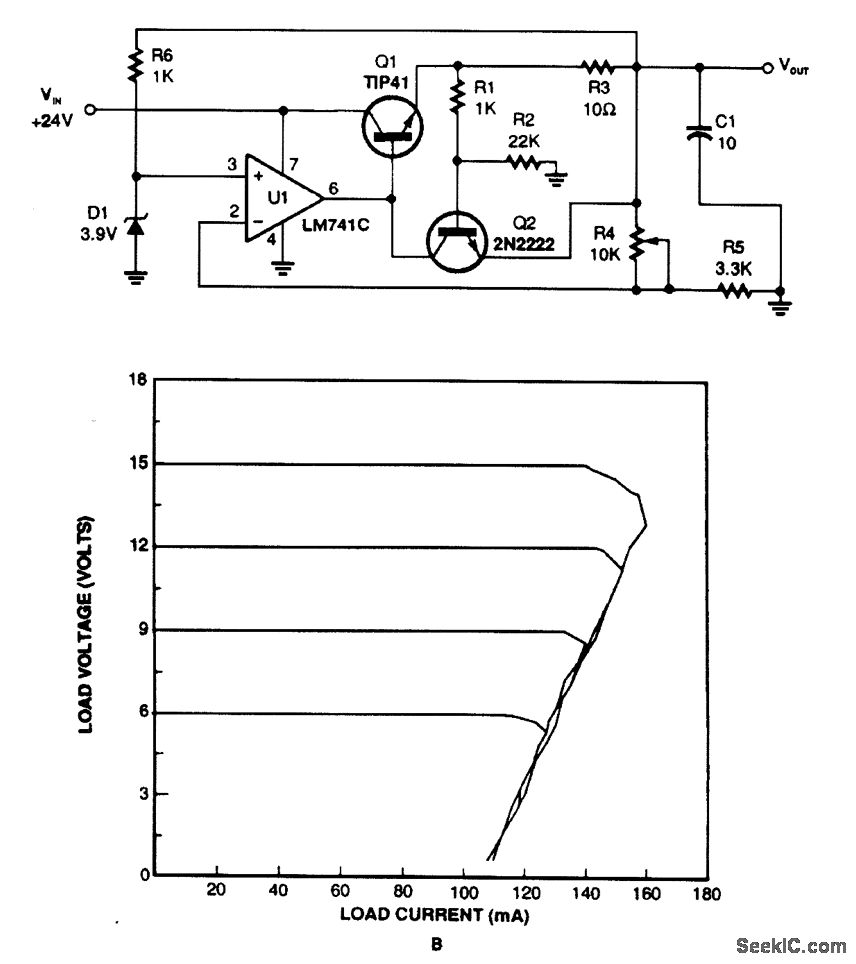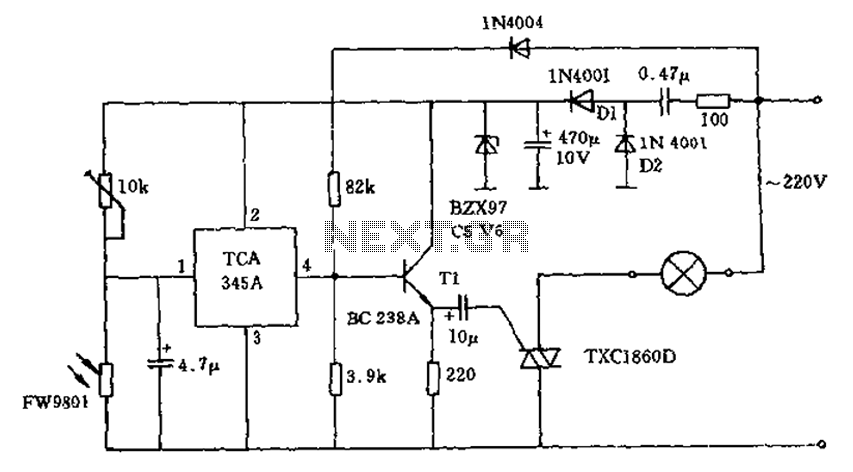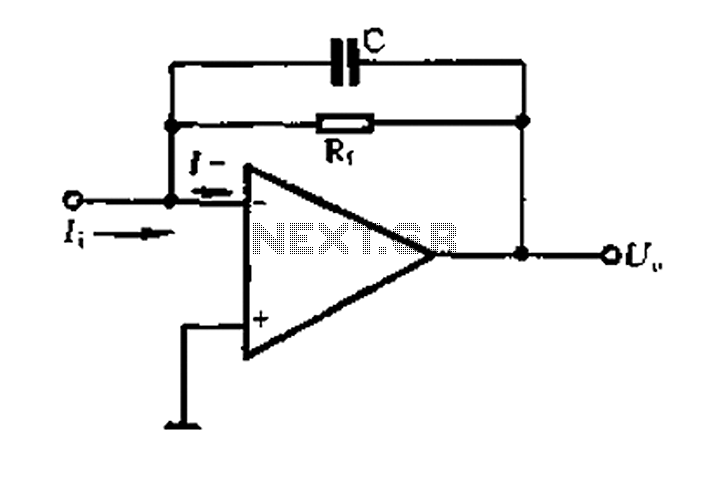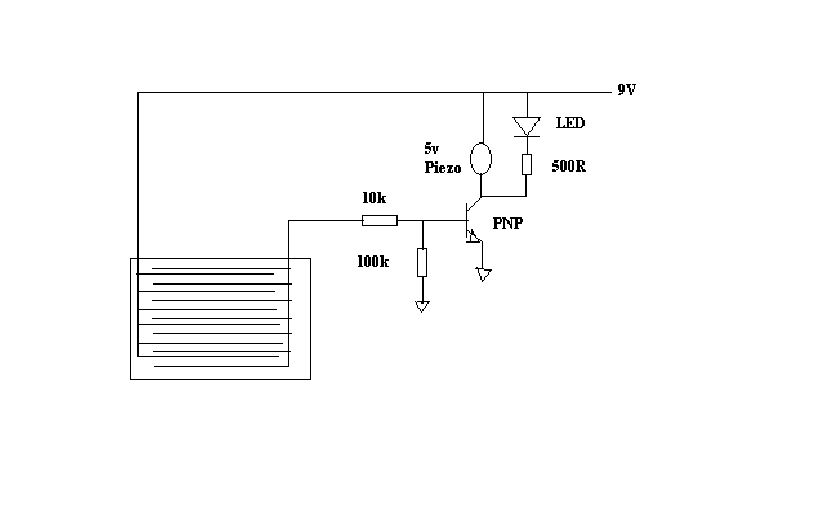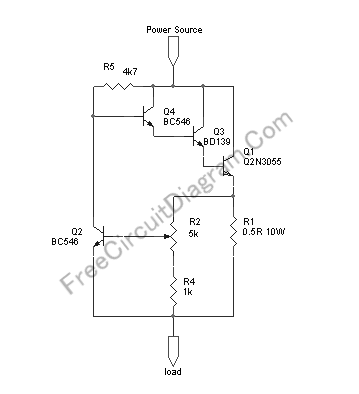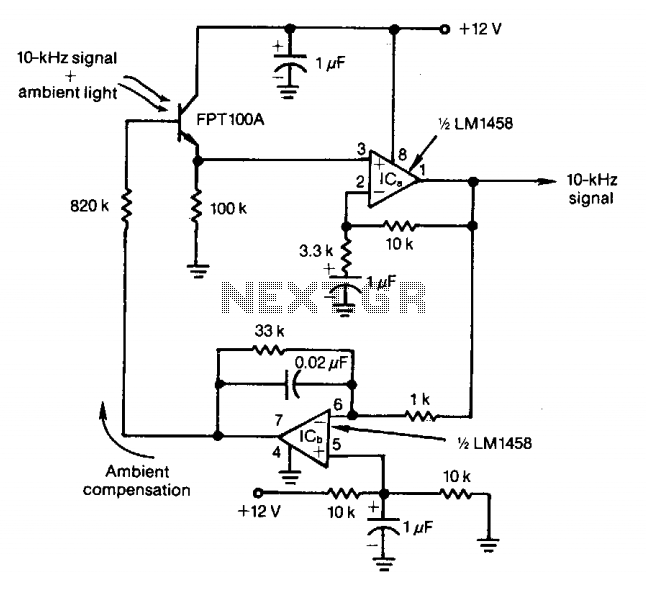
Current Loop Light Level Detector
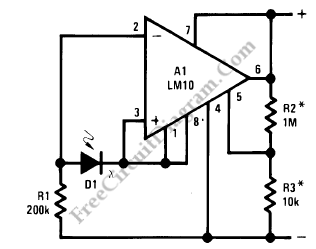
This circuit is a two-wire light level detector. The power supply and output signal are delivered through the same wires, utilizing a current loop.
This two-wire light level detector circuit operates by using a single pair of wires for both power and signal transmission, which simplifies installation and reduces wiring complexity. The design typically employs a photodetector, such as a photodiode or phototransistor, to sense ambient light levels. When the light intensity changes, the photodetector generates a corresponding change in current.
The current loop configuration is often based on the 4-20 mA standard, which is widely used in industrial applications for transmitting analog signals over long distances. In this setup, the light level detected by the sensor modulates the current flowing through the loop. A higher light intensity results in an increased current, while lower light levels correspond to reduced current flow. This allows for precise monitoring of light levels in various environments.
The circuit may also include a signal conditioning stage to filter and amplify the output from the photodetector, ensuring that the signal is suitable for further processing or display. Components such as operational amplifiers can be used to improve the signal-to-noise ratio, providing a more accurate representation of the light level.
In addition, the circuit can be designed with adjustable thresholds to trigger alarms or activate other devices based on specific light level conditions. This feature enhances the versatility of the light level detector, making it suitable for applications ranging from automatic lighting control to environmental monitoring systems. Overall, the two-wire configuration, combined with the current loop principle, provides an efficient and effective solution for light level detection.This circuit is two wire light level detector, we don`t separate wires for power this sensor system and for delivering the output signal. With current loop, we. 🔗 External reference
This two-wire light level detector circuit operates by using a single pair of wires for both power and signal transmission, which simplifies installation and reduces wiring complexity. The design typically employs a photodetector, such as a photodiode or phototransistor, to sense ambient light levels. When the light intensity changes, the photodetector generates a corresponding change in current.
The current loop configuration is often based on the 4-20 mA standard, which is widely used in industrial applications for transmitting analog signals over long distances. In this setup, the light level detected by the sensor modulates the current flowing through the loop. A higher light intensity results in an increased current, while lower light levels correspond to reduced current flow. This allows for precise monitoring of light levels in various environments.
The circuit may also include a signal conditioning stage to filter and amplify the output from the photodetector, ensuring that the signal is suitable for further processing or display. Components such as operational amplifiers can be used to improve the signal-to-noise ratio, providing a more accurate representation of the light level.
In addition, the circuit can be designed with adjustable thresholds to trigger alarms or activate other devices based on specific light level conditions. This feature enhances the versatility of the light level detector, making it suitable for applications ranging from automatic lighting control to environmental monitoring systems. Overall, the two-wire configuration, combined with the current loop principle, provides an efficient and effective solution for light level detection.This circuit is two wire light level detector, we don`t separate wires for power this sensor system and for delivering the output signal. With current loop, we. 🔗 External reference
